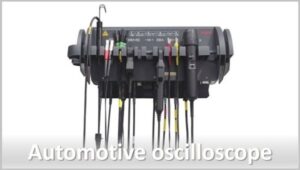Cylinder power balance test
A cylinder power balance test is performed when the vacuum test shows that there is a mechanical problem or when the engine is uneven working. This test checks the general condition of each cylinder.
All cylinders should equally contribute to the total power output of the engine. When there is a mechanical, electrical, or fuel supply problem in the engine, the affected cylinders produce less power than others.
The power balance test checks how much each cylinder contributes to the total power output of the engine. The test is performed by disabling the operation of each cylinder individually while measuring the drop in engine speed. A cylinder that has a problem will cause a smaller drop in speed compared to a correct cylinder because it does not contribute enough to working together.
In older vehicles without a catalytic converter, the power balance test is performed by turning off the spark plugs during engine operation while measuring the speed drop. By stopping the ignition on each cylinder, their condition is monitored separately. The ignition is stopped for a maximum of a few seconds. The next spark plug is switched off after the engine has stabilized.
Cylinder power balance test
For vehicles with a catalytic converter, ignition neutralization testing is risky. When there is no ignition, the heated mixture goes to the catalyst where there is a danger of self-ignition of the mixture and destruction of the catalyst. Therefore, in these vehicles for the power balance test, the fuel supply is neutralized by disconnecting the injector connector for each cylinder separately.
Newer vehicles electronically control the idle speed. At each deviation from the set speed, the motor ECU corrects the motor operation and establishes the set value. In such vehicles, we cannot measure the drop in speed by neutralizing the cylinder. There are two ways to do the testing. The first is to perform the test just above idle, where the ECU does not regulate the variation of the number of revolutions. To set a constant speed above idle, a special tool is used, which is placed between the accelerator pedal and the steering wheel. The second method is provided by the ECU engine itself, which has a built-in power balance test function. The test is accessed via diagnostics and after activating the ECU automatically switches off each cylinder, measures the speed drop, and analyzes the condition of each cylinder.
So, before taking the power balance test, it is necessary to get acquainted with the vehicle and choose the test method.
To perform a cylinder power balance test, follow these steps:






